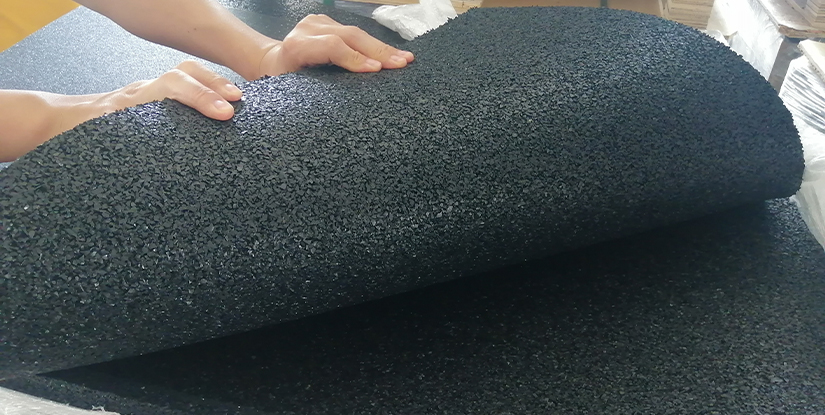Treadmill Floor Mat: Buyer's Guide, Benefits, and Maintenance

Why a Treadmill Floor Mat Matters
A treadmill floor mat is an essential accessory for home and commercial gyms. It protects flooring from impact, localized wear, sweat and dust while providing acoustic insulation and improved stability for equipment. Choosing the right mat extends the life of both the treadmill and the surface beneath it, reduces maintenance costs, and creates a safer exercise environment.
Key Benefits
- Floor protection: Prevents scratches, dents, and indentations on hardwood, laminate, vinyl and tile floors.
- Noise and vibration reduction: Minimizes mechanical noise and vibration transferred to adjacent rooms and floors.
- Equipment stability: Provides a non-slip layer that reduces treadmill movement during use.
- Debris control: Collects dust, sweat and small particles to protect treadmill motors and belt systems.
- Easy maintenance: Simplifies cleaning and can be disinfected separately from the equipment.
Materials and Construction
Quality mats are typically manufactured from dense closed-cell PVC, rubber, thermoplastic elastomers (TPE) or multi-layer composites. Closed-cell materials resist moisture and mold, while high-density rubber provides superior vibration damping and durability. Multi-layer designs often combine a firm base for load distribution with a softer top layer for noise absorption and grip.
Size, Thickness and Weight Capacity
Mat selection should match treadmill footprint and anticipated loads. Recommended sizes extend at least 6–12 inches beyond the front and rear of the treadmill and at least 8–12 inches on each side. Common thicknesses range from 3 mm to 10 mm for home use; commercial and heavy-duty setups may require 8–12 mm or layered solutions. Consider weight capacity ratings and choose a mat that distributes load to prevent permanent compression over time.
Compatibility and Fit
Confirm compatibility with treadmill dimensions, incline mechanisms, and console placement. For treadmills with motor vents or under-deck air inlets, select mats designed with ventilation cutouts or place the treadmill to avoid blocking air flow. If the treadmill has wheels, ensure the mat surface tolerates movement without tearing or excessive friction.
Installation and Placement
- Lay the mat flat on a clean, dry surface. Allow it to acclimate for 24 hours if unrolled from packaging.
- Position the treadmill centered on the mat, ensuring adequate front and rear clearance for safety and ventilation.
- Use edge guards or trim excess matting if necessary, but avoid creating elevated transitions that may trip users.
Cleaning and Maintenance
Routine maintenance preserves mat performance: sweep or vacuum regularly to remove debris, wipe with a mild detergent and water solution, then air-dry. Avoid aggressive solvents or petroleum-based cleaners that can degrade certain elastomers. For disinfecting, use manufacturer-recommended agents and test in an inconspicuous area first.
Durability and Environmental Considerations
Choose mats constructed from recycled rubber or TPE for improved environmental profiles. Verify certifications and manufacturing disclosures when sustainability is a priority. Durable mats reduce replacement frequency, lowering lifecycle environmental impact.
Warranty and Manufacturer Support
Review warranty terms for coverage of compression, delamination, and premature wear. Reliable suppliers provide clear specifications, load ratings and replacement policies. Retain purchase documentation to facilitate warranty claims.
How to Choose the Right Treadmill Floor Mat
- Measure treadmill footprint and add recommended clearance margins.
- Match thickness to expected load and frequency of use.
- Prioritize closed-cell, moisture-resistant materials for sweat-prone environments.
- Consider interlocking or custom-cut options for irregular layouts or multi-equipment areas.
- Evaluate surface texture for anti-slip performance and ease of cleaning.
Installation Tips for Optimal Performance
- Place the mat on a flat, level floor for even load distribution.
- Do not fold the mat; roll and unroll to minimize creasing.
- Ensure motor vents remain unobstructed to prevent overheating.
- Check periodically for curling edges or compression zones and rotate the treadmill slightly if uneven wear appears.
FAQs
- Q: Do I need a mat for every treadmill? A: Yes, a mat protects floors and reduces noise for all treadmills.
- Q: What thickness is best for home use? A: 3–8 mm suits most home treadmills; heavier use may require 8–12 mm.
- Q: Can a mat block ventilation? A: Avoid covering motor vents; choose mats with cutouts if needed.
- Q: How do I clean my treadmill mat? A: Wipe with mild detergent and water; air-dry thoroughly.
- Q: Are rubber mats odorless? A: New rubber may emit an initial odor that dissipates; low-VOC options reduce scent.
- Q: Can I place my treadmill on carpet? A: Yes, use a mat to prevent sinking and improve stability on carpeted floors.
- Q: Do mats extend treadmill life? A: Yes, by reducing dust ingress and cushioning impact on structural components.
- Q: Are interlocking mats recommended? A: Interlocking tiles work well for multi-equipment areas and can be customized to size.
- Q: What warranty should I expect? A: Warranties vary; seek 1–5 year coverage for manufacturing defects and premature wear.

